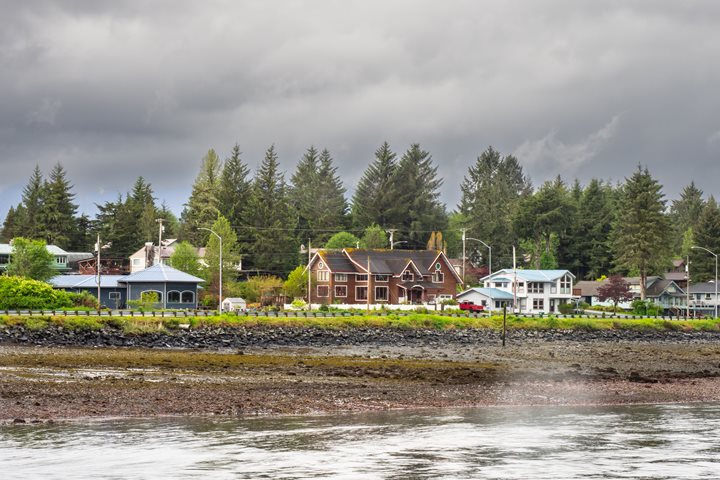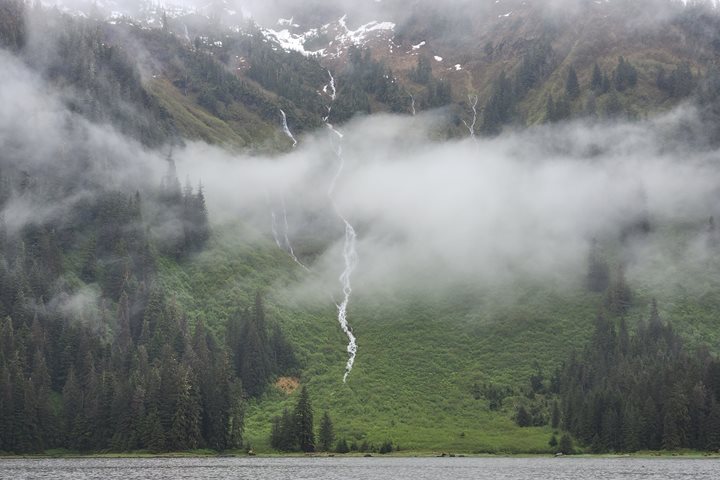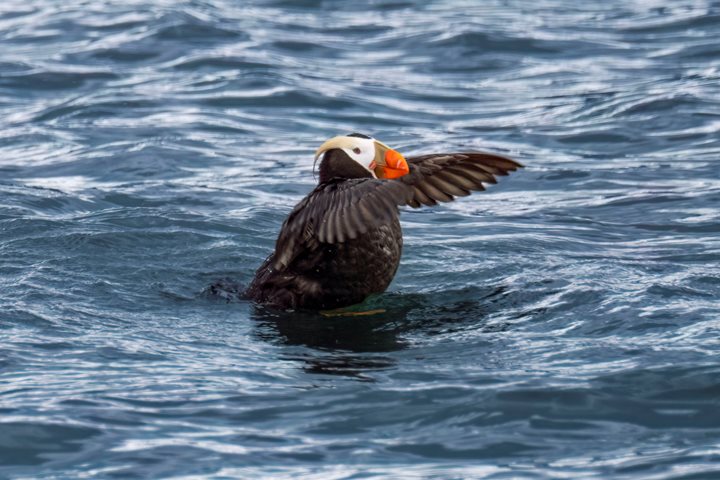I consider myself a very fortunate fellow. Thanks to Lindblad Expeditions, in concert with the National Geographic Society, I have visited glaciers all around the world, from the Arctic to Antarctica. I believe that the most beautiful of them all are the Sawyer and South Sawyer Glaciers, right here at the end of Tracy Arm. Certainly, nothing can match the intense blue of these tidewater glaciers.
After an active morning at Williams Cove featuring forest walks, kayaking, and expedition landing craft cruises, we headed up Tracy Arm, a fjord that cuts into the mainland of Alaska. The near vertical walls of the fjord attest to the power of the ice that has advanced and retreated, again and again, during the alternating warm and cold episodes that make up the Ice Ages of the last two-and-one-half million years. Even when it is stable, a glacier still carves the underlying rock as ice passes from its birthplace in the mountains to the sea. The result, when the ice melts in a warm interlude, is the complex of long, narrow waterways through which we have navigated during our voyage. Some, like Chatham Strait, are open at both ends; others, like Tracy Arm, end in a tidewater glacier or, like Red Bluff Bay, in a coastal meadow. All are fjords that were carved by the ice.
As we moved up Tracy Arm, the National Geographic Sea Bird adroitly dodged and danced to avoid collisions with floating icebergs of all shapes and sizes. Our ship stopped near where the fjord divides into two arms leading to the Sawyer and South Sawyer Glaciers. We took to our small, black boats for further approach. Here floated large pieces of ice, some larger than a house (or counting the 7/8 or so of the ice that is below water, larger than an apartment complex.) Some were the most intense blue imaginable. The blue color is the result of light acting on ice that is lacking air bubbles. Air bubbles reflect all wavelengths of light, so ice with air bubbles appears white. Ice without air bubbles absorbs more of the longer wavelengths and reflects more of the shorter wavelengths, so we see blue. We see the most intense blue in large pieces of high-density ice.
We turned the final corner and there, before us, was the Sawyer Glacier. The floating ice that filled the fjord in front of the glacier provided platforms for harbor seal mothers and their new pups. We believe that the seals have their pups on ice to avoid predation by killer whales. The mother seal fills her pup with rich milk for three to four weeks; then, she abruptly abandons her pup and the young seal is on his own.
The two Sawyer Glaciers, like so many of the world's glaciers, is rapidly retreating and thinning. We could see evidence of this in the form of areas of bare rock, without vegetation, both above and in front of the glacier. The water that leaves the glacier enters the ocean and contributes to the rise in sea level that is occurring all around the globe, bringing danger to low-lying coastal communities.







